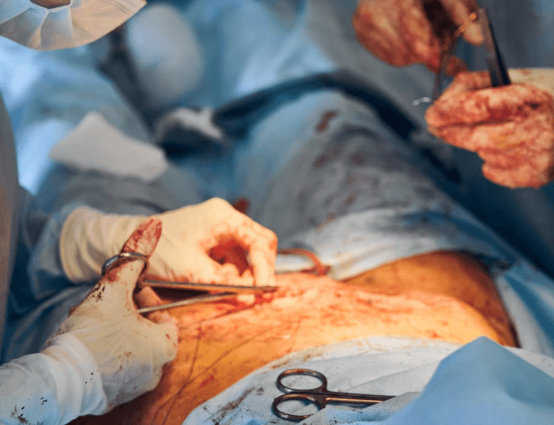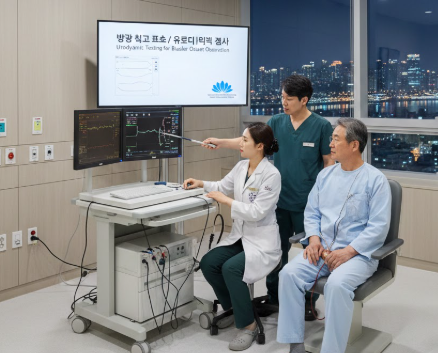Treatment Overview
The Deep Infiltrating Endometriosis (DIE) Surgery in Korea is a specialized, advanced laparoscopic procedure designed to remove deep endometriotic lesions that infiltrate pelvic organs and tissues. This type of endometriosis often affects the bowel, bladder, uterosacral ligaments, and pelvic nerves, making precision surgical expertise critical.
Korean hospitals are globally recognized for their excellence in DIE surgery, combining high-definition 3D laparoscopic imaging, robotic-assisted surgery, and microsurgical techniques. These innovations allow surgeons to remove deep lesions completely while preserving pelvic function, fertility, and quality of life.
Purpose & Benefits
Purpose:
- Precisely excise deep infiltrating endometriosis lesions
- Relieve chronic pelvic pain and infertility associated with DIE
- Preserve pelvic organ function and fertility
- Reduce disease recurrence through complete excision
Benefits:
- Minimally invasive with smaller incisions
- High precision for complete lesion removal
- Preservation of reproductive and pelvic organ function
- Reduction in postoperative pain
- Shorter hospital stays (often 2–4 days)
- Improved fertility outcomes
- Comprehensive treatment of complex pelvic disease
Ideal Candidates
DIE surgery is suitable for women who:
- Have confirmed or suspected deep infiltrating endometriosis
- Experience severe pelvic pain, bowel or bladder symptoms, or infertility
- Seek fertility preservation
- Prefer a minimally invasive approach over open surgery
Korean hospitals perform detailed preoperative mapping with MRI, ultrasound, and sometimes diagnostic laparoscopy to design a patient-specific surgical plan.
Possible Risks & Complications
While DIE surgery is highly advanced and safe, potential risks include:
- Bleeding or infection
- Injury to bowel, bladder, ureters, or pelvic nerves
- Adhesion formation
- Recurrence of endometriosis
- Anesthesia-related complications
Korea’s surgical centers minimize these risks using advanced imaging, robotic assistance, and multidisciplinary surgical teams including gynecologists, colorectal surgeons, and urologists when necessary.
Surgical Techniques Used
Korea employs a combination of advanced surgical techniques for DIE:
- High-Definition 3D Laparoscopy or Robotic Assistance: For precise lesion mapping and removal.
- Microsurgical Dissection: Minimizes damage to surrounding healthy tissue.
- Energy-Based Vessel Sealing (Ultrasonic/Bipolar): Reduces bleeding and enhances precision.
- CO₂ Laser or Plasma Energy: Used for delicate excision of lesions.
- Fluorescence Imaging (ICG): Improves visualization of lesion margins and vascular structures.
- Nerve-Sparing Techniques: Preserve pelvic nerve function to avoid chronic pain.
These methods ensure the complete excision of deep lesions while maintaining fertility and pelvic function.
Recovery & Aftercare
Recovery after DIE surgery depends on the extent of the disease and the complexity of surgery, but is generally faster than open surgery. Most patients are discharged within 2–4 days and resume normal activities in 4–6 weeks.
Postoperative care includes:
- Pain management and incision monitoring
- Pelvic physiotherapy for optimal healing
- Avoiding strenuous activity during recovery
- Follow-up imaging and assessment of pelvic health
- Hormonal therapy to prevent recurrence
- Fertility counseling if desired
Korean hospitals offer structured aftercare programs that address pain management, recurrence prevention, and reproductive health.
Results & Longevity
DIE surgery in Korea offers excellent long-term outcomes:
- Complete removal of deep lesions
- Relief from severe pelvic pain
- Preservation of fertility and pelvic organ function
- Reduced recurrence of endometriosis
- Faster recovery with minimal scarring
- High patient satisfaction and improved quality of life
Korean surgeons achieve high success rates by using precision laparoscopic and robotic techniques.
Treatment Process in Korea
The DIE surgical process in Korea is structured and patient-centered:
- Comprehensive Consultation & Diagnostic Imaging: MRI, ultrasound, and sometimes diagnostic laparoscopy.
- Personalized Surgical Planning: Based on the extent of disease and patient goals.
- Advanced Laparoscopic or Robotic Surgery: With microsurgical and nerve-sparing techniques.
- Structured Recovery & Follow-Up: Including physiotherapy, hormonal therapy, and fertility counseling.
International patients benefit from Korea’s seamless medical tourism support, including interpreters, accommodation arrangements, and transportation.
Cost Range
The Deep Infiltrating Endometriosis Surgery in Korea typically ranges between USD 12,000 and 25,000, depending on:
- Extent and complexity of disease
- Surgical method (robotic vs. laparoscopic)
- Hospital and surgeon expertise
- Length of hospital stay and aftercare services
Costs generally include consultation, surgery, anesthesia, hospitalization, and postoperative follow-up.
Popular Clinics
- Samsung Medical Center (Seoul): Leader in advanced laparoscopic and robotic DIE surgery.
- Asan Medical Center (Seoul): Specializes in multidisciplinary deep endometriosis excision.
- Severance Hospital (Yonsei University, Seoul): Known for precision DIE surgery with fertility preservation.
- CHA Gangnam Medical Center: Expertise in nerve-sparing DIE excision.
- Ewha Womans University Medical Center: Offers comprehensive DIE surgery with integrated recovery programs.




